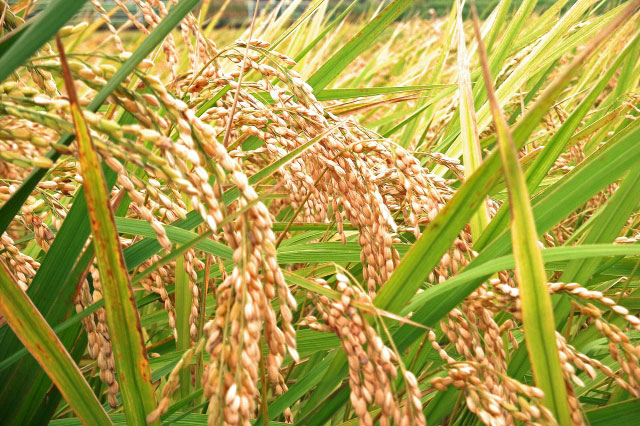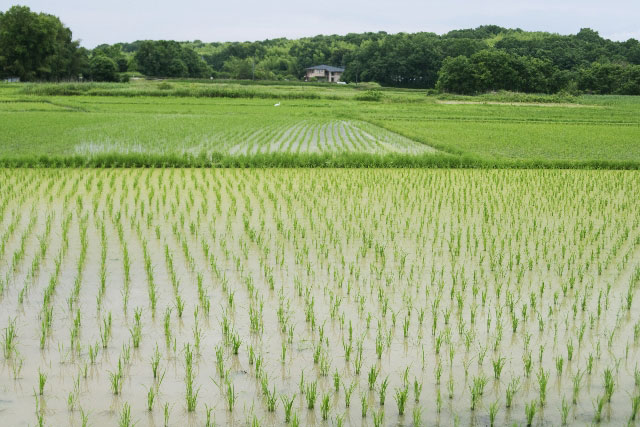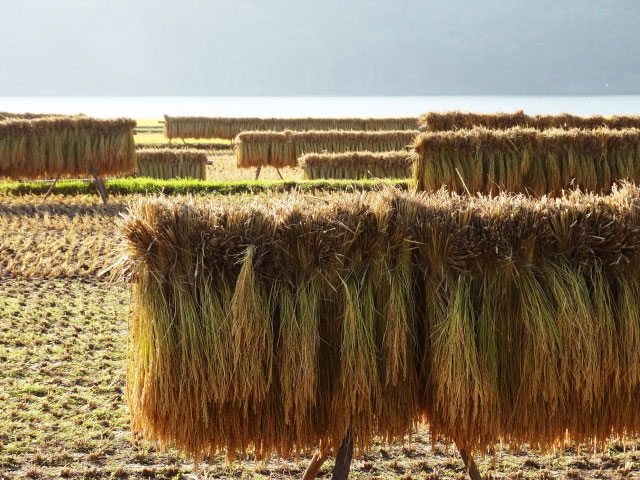Rice is an integral part of human food culture–no matter where in the world you travel, rice is eaten in homes and restaurants, as main courses and as snacks, by rich and poor.
Our deep relationship with rice dates back to almost 10,000 BCE, where the rice plant that we know even to this day, Oryza sativa, was domesticated from its wild progenitor, Oryza rufipogon. A grass that produces a flower and a grain, the domestication and annual planting of rice originally occurred in the Pearl River Valley region of China, along the mid-Yangtze River. Cultivation, tools and techniques spread down the Yangtze River and the Huai River over the next 2,000 years, and were shared with India, Sri Lanka, Japan, and countries surrounding the Mediterranean Sea as both trade and conflict comingled cultures. Transfer and cultivation in the Americas began during the European Age of Exploration, and in modern times, rice is grown on all continents except for Antarctica.
The rice plant, while hearty, only produces a crop once in areas with abundant water. In arid zones, the plant survives as a perennial, producing new tillers following harvesting. It is a small semiaquatic grass, comprised of a main stem and multiple tillers, or shoots, that produce either a flower or panicle. The plant matures in stages over 3-6 months, from the vegetative state, to the reproductive state, to the ripening state.
The plant is initially germinated from the seeds of unrefined, unprocessed rice. Roots and shoots sprout from the seed, the order depending on what type of soil the seed has been planted in. Wet conditions will see the growth of the shoot first, so that oxygen can be supplied to the plant, whereas in dry conditions, roots will emerge so that the plant will have a healthy supply of water. During the vegetative state, the plant stem grows, becoming strong enough to support tillers – branches that grow from the main plant stem to bear grain–and leaves, which multiply every 3-4 days.
The rice plant becomes ready to reproduce about 2 ½ months after sowing, when a panicle begins to form. The panicle, which bears the fruit (in this case, the rice grain), pushes through the leaves and as it fully emerges, produces a flower that can be pollinated. The grains ripen over the next three months, and when ready to harvest, the entire plant is picked from the soil.
Rice plants are lightly dried in the sun following rainy conditions or after harvest, and are threshed to remove the stems and leaves from the grains. The unprocessed, unrefined grains go on to be cleaned, polished and packaged before they are used to create the many dishes human society all over the world relies on for nutrition and sustenance.
Rice is such an integral part of the Zojirushi community, that we’ve planned a series of posts about this incredibly versatile and important plant. Stay tuned for next month’s post about the types of rice grains and how rice goes from the seed of the rice plant to the grain you find in your market.



Leave a Reply